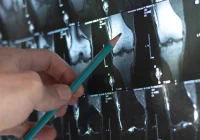Artificial intelligence is advancing quickly in medical imaging, expanding potential users and use cases while exposing gaps in knowledge about capabilities, risks and deployment. Complex models, large data demands and distinct non-human failure modes make safe adoption challenging. A multisociety syllabus from several institutions sets out role-specific competencies to guide use, purchasing and development. The framework addresses four personas—user, purchaser, Physician Collaborator and developer—to align responsibilities, reduce risk and support effective integration within routine workflows. By clarifying what each role needs to know, the syllabus seeks to improve decision-making, sustain performance after go-live and translate algorithmic advances into clinical value.
Role-Based Skills for Safe Clinical Use
Users encounter AI within day-to-day workflows that often differ from training environments. Competence begins with recognising powerful predictive capabilities alongside non-human failure modes that can produce systematic errors or induce automation bias. Awareness of cleared intended use, as reflected in regulatory labelling, helps avoid applications beyond approved scope. Outputs reflect the distribution of the training data and may inherit its biases, when patient mix, scanners or protocols diverge, performance can degrade in ways that are abrupt and adverse. Users should understand inclusion and exclusion criteria for algorithm use, the difference between a prediction and the information derived from it and the need to interpret outputs in the context of clinical history and imaging appearance.
Must Read: Active Learning Brings Radiologists into AI Training
Explainability is another practical consideration. Many models are not designed to be inherently interpretable, and surrogate techniques such as saliency maps may exist but do not guarantee dependable insight into decision-making. Users are expected to identify recurrent failure patterns, appreciate risks introduced by workflow changes and adopt strategies to mitigate automation bias. Clear routes for communicating sudden performance shifts should be in place so that issues are escalated promptly. Engagement with feedback mechanisms supports iterative improvement, helps calibrate expectations and maintains trust among clinicians who rely on timely, accurate information to guide care.
Evidence-Driven Procurement and Robust Governance
Purchasers, often serving as clinical owners, face increasingly frequent decisions as imaging AI options grow. Evaluations should weigh safety, efficacy, reliability, transparency and value against existing standards of care and available alternatives. Benefits may include improvements in outcomes, reductions in operating costs and opportunities for additional revenue, while costs span licensing, implementation, IT support, maintenance, upgrades and potential hardware. Some tools with genuine clinical utility may not deliver a positive return for a given organisation, so purchasing choices should balance clinical impact with financial considerations.
Performance metrics require careful interpretation. Reported accuracy, sensitivity and specificity need to be read in the context of the population used for evaluation, including dataset diversity and exclusion criteria relevant to local workflows. Labelling and emerging transparency artefacts can clarify essential details about intended use and evaluation conditions. Practical deployment requirements are equally important. Compute capacity must meet throughput and latency targets so downstream tasks are not delayed, and outputs should appear in locations and formats that enable clinicians to act with minimal friction. Post-integration assessments can determine whether promised benefits are realised in practice.
Procurement responsibilities extend through implementation and the full lifecycle. Policies should govern installation, validation and monitoring to detect performance drift or adverse effects. Governance structures that include clinicians, technologists, informaticians and IT staff help clarify responsibilities, prioritise issues and sustain progress on action items. Local testing using relevant datasets, shadow or canary deployments with acceptance criteria and monitoring for data drift across scanners, protocols, patient populations and collection processes are foundational practices. Security monitoring, access controls and backup strategies should align with disaster recovery plans and training should equip end users to recognise limitations, interpret outputs and report problems efficiently.
Clinically Grounded Development and Effective Adoption
Physician Collaborators contribute clinical expertise across the lifecycle, from defining use cases to early clinical testing. Clear specification of the task, intended users, operational environment and output formats helps focus resources on high-value problems. Physicians guide dataset curation by selecting labelling schemes, annotation methods and reference standards and by communicating label fidelity, inter-rater variability and potential sources of bias. Their input informs fairness assessments and supports mitigation strategies that resonate with clinical realities rather than abstract benchmarks.
During evaluation, Physician Collaborators help choose meaningful metrics, interpret differences between measures and relate quantitative performance to workflow effects and patient well-being. As early adopters, they can surface pain points, identify unanticipated failure modes and provide holistic feedback that guides improvements to both algorithms and integration points. Developers, in turn, require competencies that extend beyond algorithmic technique. Understanding clinical workflows, healthcare data formats and interoperability standards is essential because inaccuracies can have serious consequences. Regular communication with physicians and users helps identify leverage points, clarify bottlenecks and ensure outputs are delivered in useful locations and formats.
Developers should also understand regulatory frameworks for software as a medical device, including submission requirements and approval pathways and design with privacy and data protection obligations in mind. Even with regulatory clearance, deployment can be challenging due to variable infrastructure, nascent standards and heterogeneous security controls across sites. Logging, monitoring and incident response underpin safe operation, while attention to performance at scale helps maintain responsiveness as volumes grow. By aligning technical decisions with clinical needs and operational constraints, development teams can produce tools that are not only accurate in testing but durable in practice.
A shared competency framework for users, purchasers, Physician Collaborators and developers provides a practical foundation for safe and effective adoption of AI in radiology. Clear expectations for clinical use, rigorous procurement and governance, deep clinical collaboration and developer readiness for healthcare realities help manage risk, sustain performance over time and support meaningful improvements in imaging workflows and patient care.
Source: Radiology: Artificial Intelligence
Image Credit: Freepik










